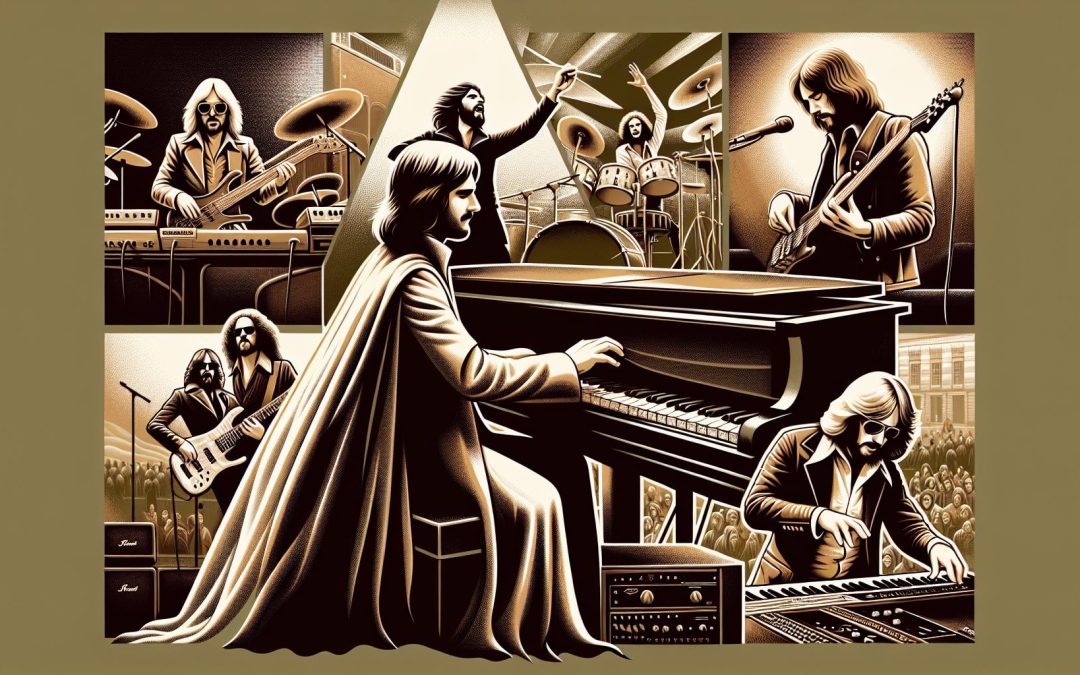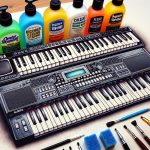When you think of rock 'n' roll, electric guitars and thunderous drums might jump to mind first. But let's not overlook the wizards of the ivories who've added layers of complexity and emotion to some of the most iconic tracks in rock history. Keyboard players in rock bands have often been the unsung heroes, weaving together melodies that elevate the music to new heights.
From the psychedelic swirls of the '60s to the synth-heavy sounds of the '80s, keyboardists have played pivotal roles in shaping the soundscapes of rock music. They've pounded out stadium-shaking organ solos, crafted haunting synthesizer lines, and everything in between. Let's dive into the stories of these famous rock keyboard players, celebrating their contributions to the music that's defined generations.
The Pioneers of Rock Keyboard
The history of rock music is rich with the sounds of pioneering keyboard players who pushed the boundaries of what was possible, both musically and technically. These musicians weren't just background accompaniments to the guitars and drums; they were integral to the development and evolution of the genre.
One of the first names that come to mind is Ray Manzarek of The Doors. His innovative use of the electric organ drove the band's biggest hits and added a new layer to rock music that had been unheard of before. Tracks like "Light My Fire" and "Riders on the Storm" would lose their haunting depth without Manzarek's keys, proving how essential keyboards were to their iconic sound.
Then there's Rick Wakeman, whose work with Yes and as a solo artist showcased his virtuosic talent and expansive creative vision. Wakeman wasn't afraid to blend rock with classical music, incorporating elaborate keyboard solos that brought a symphonic richness to progressive rock.
Jon Lord, the keyboardist for Deep Purple, brought the Hammond organ to the forefront of rock. With his aggressive, yet melodic playing style, Lord's keyboards were not just complementary but central to the band's sound, helping to carve out the heavy rock genre in the 70s.
Keith Emerson of Emerson, Lake & Palmer took keyboard playing to an entirely new level. His classical training, combined with a progressive rock sensibility, allowed him to produce some of the most complex and technically challenging music in rock history. Emerson's performances were legendary, often involving elaborate setups with multiple keyboards and synthesizers, showcasing what could be achieved through both talent and technology.
Beyond these legends, many other keyboardists have left their mark on rock music:
- Richard Wright of Pink Floyd, whose atmospheric sounds and innovative use of synthesizers and piano helped define the band’s psychedelic sound.
- Tony Banks of Genesis, whose keyboard work added both grandiose and delicate textures to the band’s music.
- Jordan Rudess of Dream Theater, who brought a new level of technical proficiency and electronic experimentation to progressive metal.
Innovations in Keyboard Technology
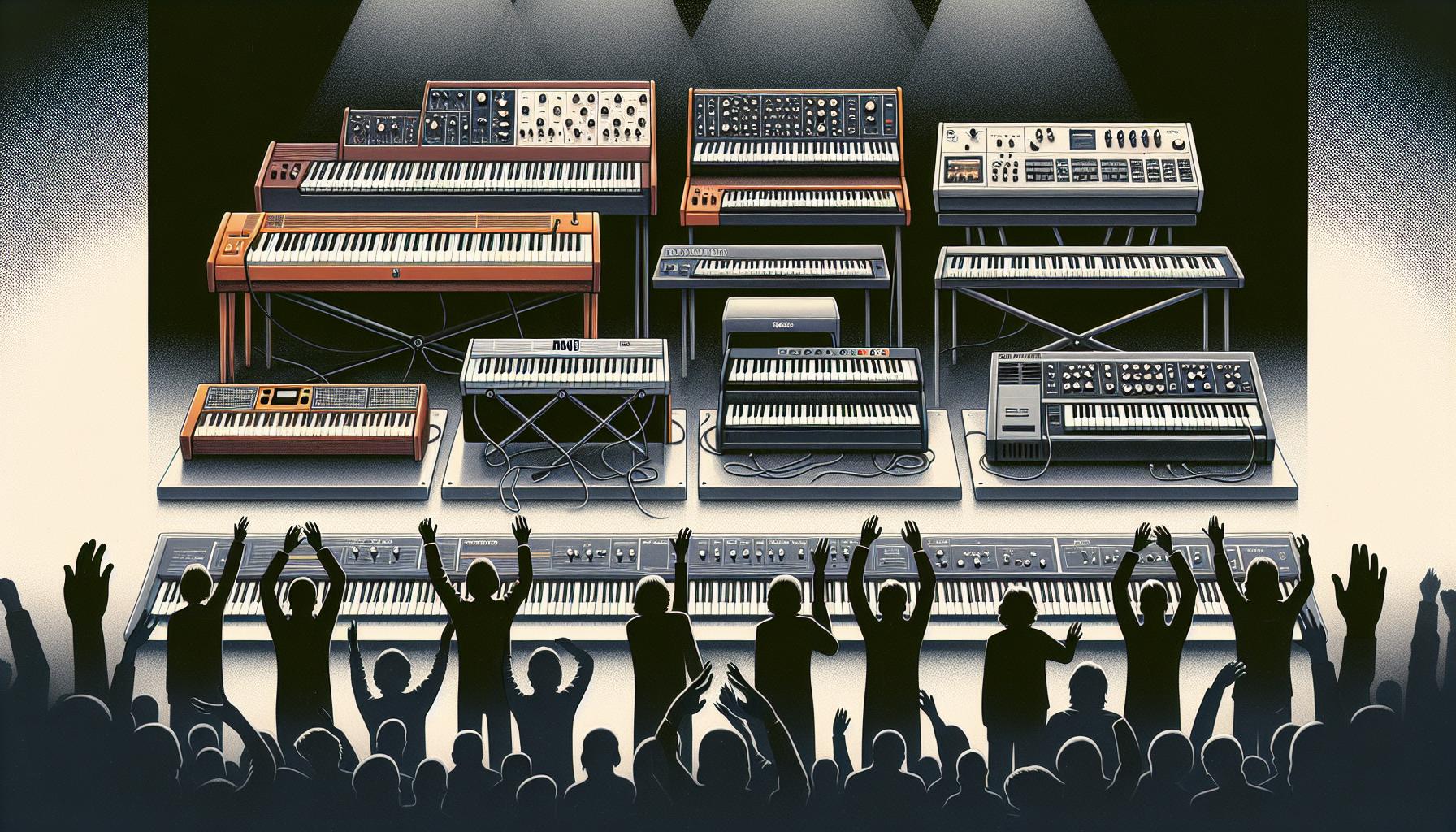
The landscape of rock music has been significantly shaped by technological advancements in keyboard instruments. These innovations not only expanded the sonic possibilities but also allowed musicians to push the boundaries of their creativity. From the mellotron's haunting tape loops to the Moog synthesizer's thick, analog tones, each development brought a new layer of depth to rock compositions.
In the late 1960s, the Mellotron became one of the first keyboards to leave a lasting impact on rock music. This instrument played back pre-recorded tapes of actual instruments, allowing keyboardists to mimic strings, choirs, or any other sound recorded onto the tapes. The Beatles' "Strawberry Fields Forever" and the Moody Blues' "Nights in White Satin" showcased the Mellotron's ethereal qualities, bewitching listeners with its orchestral sounds that could be produced by a single musician.
The early 1970s witnessed the rise of the Moog Synthesizer, an innovation that drastically altered the musical landscape. Bob Moog's creation was one of the first portable and affordable synthesizers available, making it a staple in rock bands. Its unique sound came from analog circuits that generated and manipulated electric signals, offering an array of previously unheard sounds. Keith Emerson and Rick Wakeman were among the pioneers who explored its full potential, integrating its futuristic whirs and hums into their compositions and performances.
Another game-changer was the Yamaha DX7, introduced in the early 1980s. This digital synthesizer utilized frequency modulation synthesis, a method that allowed for a wider range of sounds, from realistic instruments to unique electronic tones. The DX7's affordability and versatility made it a favorite among professionals and hobbyists, marking it as one of the bestselling synthesizers of all time. Its crystal-clear digital sounds and electric pianos became defining features of the decade's pop and rock hits.
The advent of Music Workstations in the late 1980s and early 1990s further revolutionized the role of keyboards in music production. Instruments like the Korg M1 combined synthesizers, samplers, and sequencers, enabling musicians to compose entire tracks using a single piece of gear. These workstations facilitated a more integrated approach to music-making, where keyboardists could not only play live but also produce and arrange music, crafting layers of sound that were previously impossible to achieve alone.
| Year |
Iconic Keyboard Riffs in Rock Music
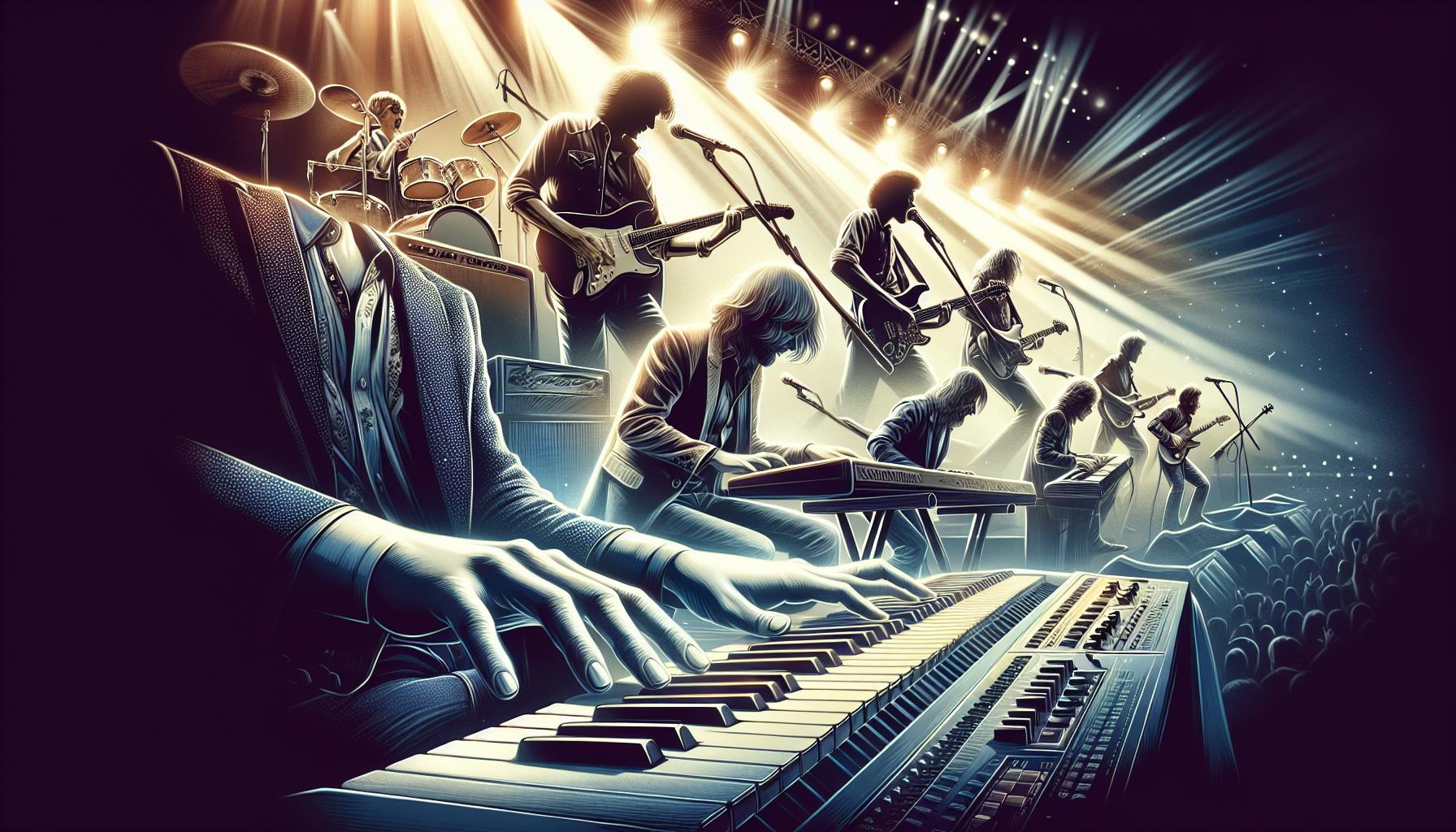
The evolution of rock music has been significantly enriched by the contribution of keyboard riffs that have left an indelible mark on listeners worldwide. These riffs, often memorable and instantly recognizable, serve as the backbone of many classic rock tracks. They have not only defined the sound of their respective songs but have also elevated the role of keyboardists in rock bands, showcasing their creativity and technical prowess.
One of the most celebrated keyboard riffs can be found in "Light My Fire" by The Doors. Ray Manzarek's intricate playing on a Vox Continental organ created a mesmerizing introduction that has become synonymous with the psychedelic rock era. This riff exemplifies how keyboards can lead a song, setting a tone that is both haunting and captivating.
Another iconic piece is the intro of "Jump" by Van Halen, where Eddie Van Halen, predominantly known for his guitar skills, showcased his versatility by crafting one of rock's most unforgettable keyboard riffs using an Oberheim OB-Xa. The punchy and vibrant riff perfectly captured the energy of the 80s rock scene, demonstrating the keyboard's ability to stand out in a genre often dominated by guitars.
In the realm of progressive rock, the keyboard riff in "Roundabout" by Yes stands out for its complexity and brilliance. Rick Wakeman's use of the Hammond organ combined with a Minimoog synthesizer creates a soundscape that is both intricate and beautiful, further cementing his status as a keyboard virtuoso. This riff is not just a part of the song; it is a pivotal moment that captures the essence of progressive rock's experimental nature.
The introduction to "Baba O'Riley" by The Who, created by Pete Townshend on a Lowrey organ, offers a distinctive blend of electronic and rock elements. Often mistaken for a synthesizer, the organ riff is cyclic and hypnotic, laying the groundwork for one of the most innovative tracks in rock history. The usage of a repeating marimba-like effect demonstrates the keyboard's versatility and its capacity to produce unique sounds that guitar or drums cannot replicate.
| Song | Artist | Keyboardist | Instrument Used |
|---|---|---|---|
| Light My Fire | The Doors | Ray Manzarek | Vox Continental |
| Jump | Van Halen |
Rock Keyboardists Who Influenced Other Genres
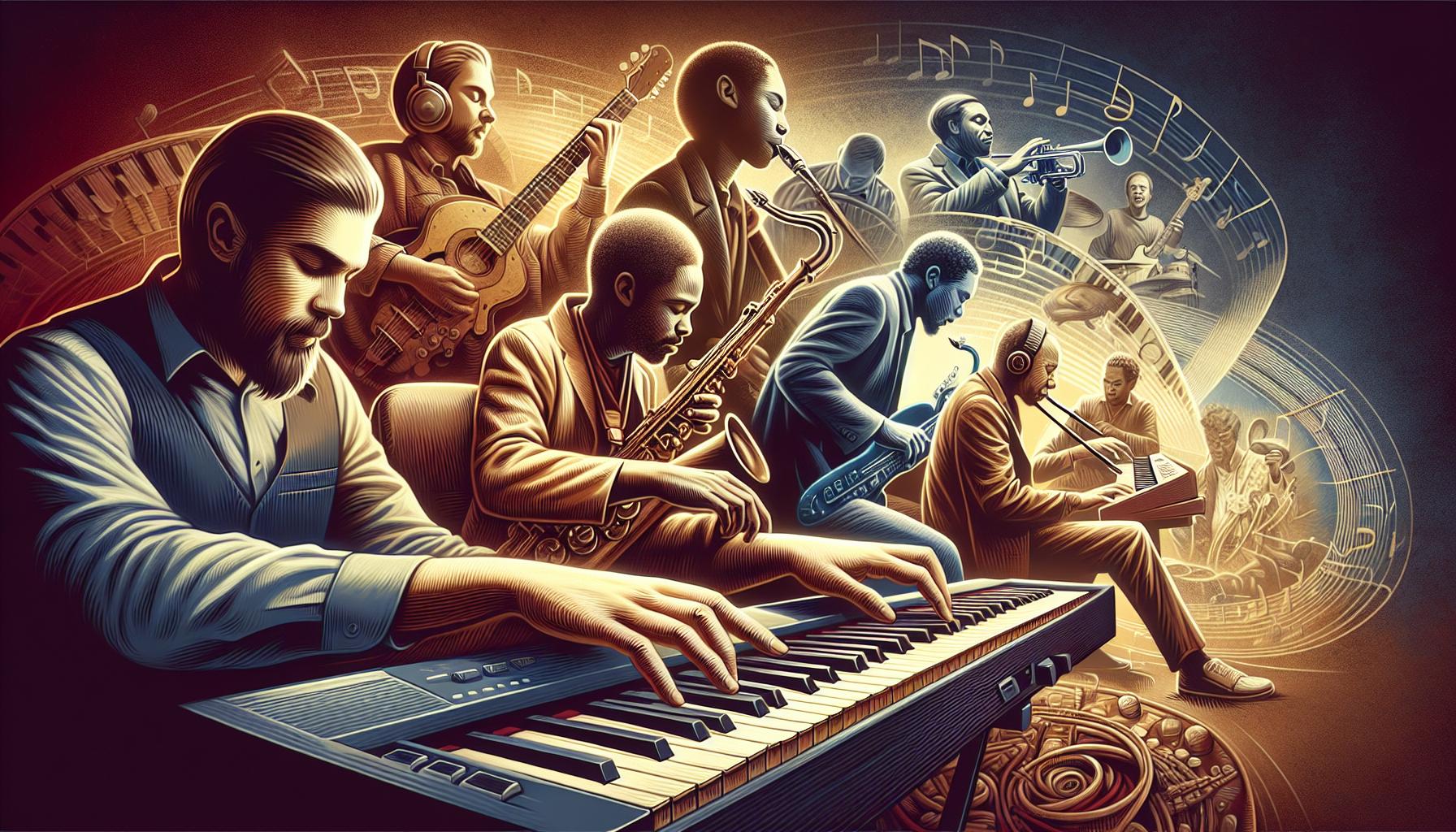
The world of rock music has been teeming with prodigious keyboard players, but the influence of some has transcended the boundaries of rock, seeping into other genres and shaping sounds in unexpected ways. These artists have demonstrated that a mastery of the keyboard can push musical innovation far beyond the conventional limits.
Ray Manzarek, famed for his work with The Doors, is a prime example. His iconic keyboard lines didn't just define the sound of The Doors; they left an indelible mark on the world of jazz and blues. Manzarek's ability to blend rock with these genres showed many musicians the potential for cross-genre innovation. His improvisational style, particularly on tracks like "Riders on the Storm," showcased a jazz influence that would inspire keyboardists in various genres to experiment more freely with their compositions.
Another luminary is Jon Lord of Deep Purple, whose pioneering work on the Hammond organ was not confined to the realm of hard rock. Through his classical compositions and the fusion of rock, classical music, and blues in his keyboard playing, Lord influenced not just rock musicians but also those in the classical and blues genres. His blend of baroque and classical motifs with rock music in tracks like "Highway Star" and "Lazy" demonstrated how the keyboard could serve as a bridge between vastly different musical worlds.
Herbie Hancock, though primarily known as a jazz musician, had a profound impact on rock and funk with his innovative use of synthesizers. His album "Head Hunters," featuring the track "Chameleon," is a testament to his influence, showing how keyboards could drive a song's rhythm as well as its melody. Hancock’s forays into electro-funk and his willingness to embrace the possibilities of electronic instruments encouraged rock keyboardists to explore new sounds and textures, expanding the sonic palette of rock music.
The influence of these keyboardists on other genres underscores the versatility and transformative power of the keyboard in popular music. The following are some pivotal moments that highlight how each artist contributed to their respective fields:
| Artist | Genre Influenced | Key Contribution |
|---|---|---|
| Ray Manzarek | Jazz & Blues | Blending improvisational styles |
| Jon Lord | Classical & Blues | Fusing classical motifs with rock |
| Herbie Hancock | Funk | Pioneering use of synthesizers |
Remembering the Legends: Legacy of Rock Keyboard Players
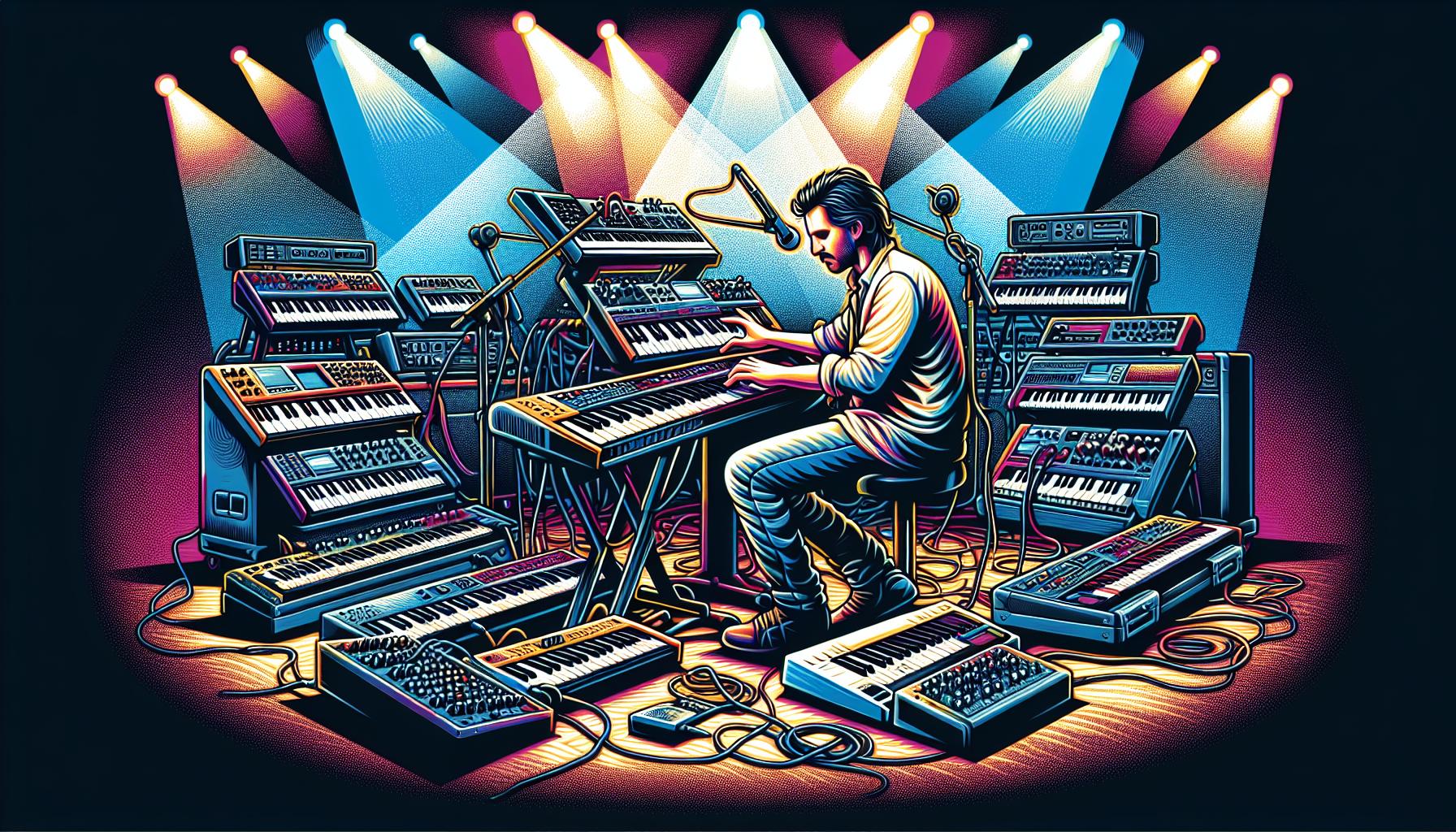
The legacy of rock keyboard players stretches far and wide, impacting not just the realm of rock music but also seeping into the veins of various musical styles. Pioneers like Rick Wakeman of Yes and Keith Emerson of Emerson, Lake & Palmer didn't just play music; they transformed the rock landscape with every note. Wakeman, with his capes and extravagant performances, and Emerson, with his flamboyant keyboard theatrics, showed that the keyboard was not just an accompaniment—it was a centerpiece capable of astounding feats of musical gymnastics.
These legends were instrumental in showcasing the keyboard's versatility, blending it seamlessly with electric guitars and drums to create a cohesive sound that was unmistakably rock n' roll yet distinct in its richness. For instance, Rick Wakeman’s contributions to the concept albums of Yes added layers of narrative depth, transforming the music into an auditory journey. Meanwhile, Keith Emerson’s pioneering work with the Moog synthesizer brought a new sonic palette to rock music, highlighting the synth's potential as a lead instrument in a genre dominated by guitars.
Beyond their musical contributions, these keyboardists inspired a generation of musicians across various genres, proving the keyboard's place as a vital and dynamic instrument in the world of music. The influence of these rock legends can be seen in the works of contemporary artists in pop, hip-hop, and electronic music, where the keyboard continues to play a crucial role in composition and performance.
The impact of rock keyboardists of the 1970s and 1980s on today's music scene is undeniable. Innovators like Tony Banks of Genesis, with his intricate compositions, helped to lay the groundwork for progressive rock and pop music, influencing not only rock bands but also composers and producers in other genres. The melding of classical training with rock and roll energy by these artists created a new template for what was possible musically, pushing the boundaries of creativity and innovation.
Moreover, the advent of digital technology and synthesizers, embraced wholeheartedly by these rock keyboardists, paved the way for the electronic and digital sounds that dominate contemporary music. The legacy of rock keyboard players is not confined to their era but continues to resonate, with modern artists frequently citing them as major influences on their work.
Conclusion
The legacy of rock's keyboard maestros is a testament to their groundbreaking work. They didn't just play music; they created worlds within melodies, blending classical influences with rock's raw energy. It's clear that their innovative use of keyboards and synthesizers did more than shape the sound of their own bands. They laid down a musical foundation that continues to influence a wide array of genres today. Their passion and creativity remind us that at the heart of great music is the courage to experiment and the talent to transform notes into emotions. As we look back at their contributions, it's evident that the spirit of rock lives on, not just in guitars and drums, but in the keys that danced under the fingers of these legendary artists.
Harlan Kilstein began playing piano during covid with no piano background at all. He taught himself how to play learning what to do and what not to do.
Today he's an advanced intermediate player and can help you grow in your skills because he learned all this on his own.

